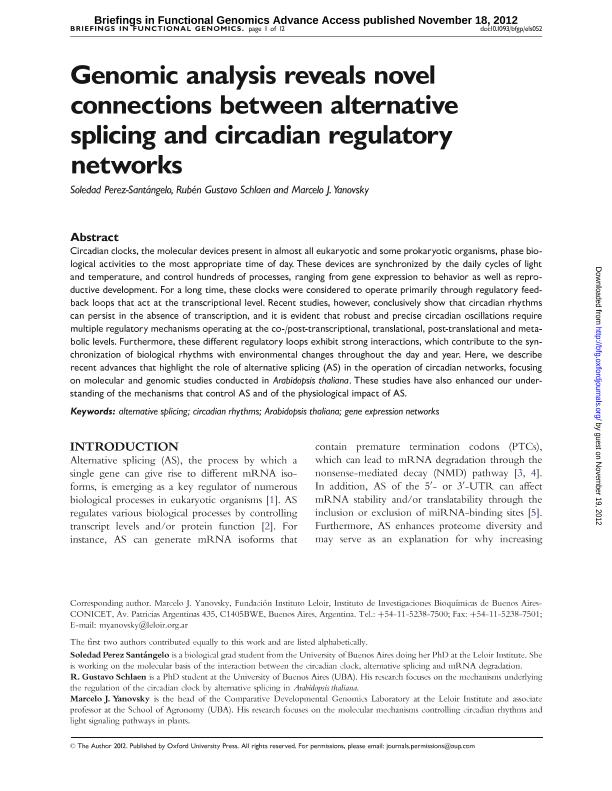Artículo
Genomic analysis reveals novel connections between alternative splicing and circadian regulatory networks
Fecha de publicación:
01/2013
Editorial:
Oxford University Press
Revista:
Briefings in Functional Genomics
ISSN:
2041-2649
e-ISSN:
2041-2657
Idioma:
Inglés
Tipo de recurso:
Artículo publicado
Clasificación temática:
Resumen
Circadian clocks, the molecular devices present in almost all eukaryotic and some prokaryotic organisms, phase biological activities to the most appropriate time of day. These devices are synchronized by the daily cycles of light and temperature, and control hundreds of processes, ranging from gene expression to behavior as well as reproductive development. For a long time, these clocks were considered to operate primarily through regulatory feedback loops that act at the transcriptional level. Recent studies, however, conclusively show that circadian rhythms can persist in the absence of transcription, and it is evident that robust and precise circadian oscillations require multiple regulatory mechanisms operating at the co-/post-transcriptional, translational, post-translational and metabolic levels. Furthermore, these different regulatory loops exhibit strong interactions, which contribute to the synchronization of biological rhythms with environmental changes throughout the day and year. Here, we describe recent advances that highlight the role of alternative splicing (AS) in the operation of circadian networks, focusing on molecular and genomic studies conducted in Arabidopsis thaliana. These studies have also enhanced our understanding of the mechanisms that control AS and of the physiological impact of AS.
Palabras clave:
Splicing Alternativo
,
Reloj Biologico
,
Plantas
Archivos asociados
Licencia
Identificadores
Colecciones
Articulos(IIBBA)
Articulos de INST.DE INVEST.BIOQUIMICAS DE BS.AS(I)
Articulos de INST.DE INVEST.BIOQUIMICAS DE BS.AS(I)
Citación
Perez Santangelo, Maria Soledad; Schlaen, Rubén Gustavo; Yanovsky, Marcelo Javier; Genomic analysis reveals novel connections between alternative splicing and circadian regulatory networks; Oxford University Press; Briefings in Functional Genomics; 12; 1; 1-2013; 13-24
Compartir
Altmétricas




